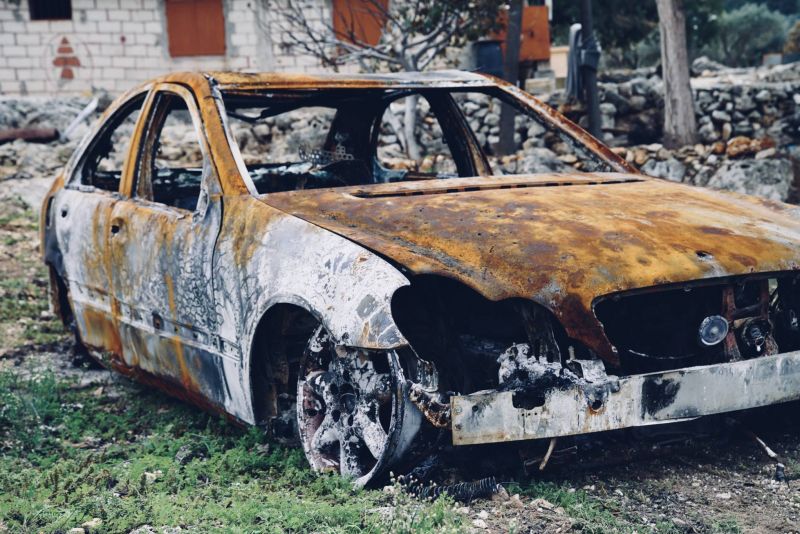
The remains of a car, which caught fire after Israeli air strike in the village of Dhayra, southern Lebanon, Saturday Nov. 25. (Credit: Olivia Le Poidevin/L'Orient Today)
For 50 days, southern Lebanon has seen daily exchanges of fire between Hezbollah and the Israeli army. On Saturday, some of the tens of thousands of people who have had to flee their homes because of the fighting on Lebanon's southern border with Israel, headed back home to see their villages once again. On the second day of the four day truce in the Israel-Hamas war, L'Orient Today's Olivia Le Poidevin, Lyana Alameddine and Lucile Wassermann spent the day visiting some of these villages. We discovered the extent of the damage, and why, for many of the inhabitants, the current peace remains a tentative one.
Tayr Harfa
We started in Tayr Harfa, a town that recently witnessed a tragedy that has left its physical scars on the landscape. Two large holes are indented in the ground marking the spot where Al-Mayadeen journalists Farah Omar and Rabih al-Maamari were killed by an Israeli air strike on Tuesday Nov. 21.
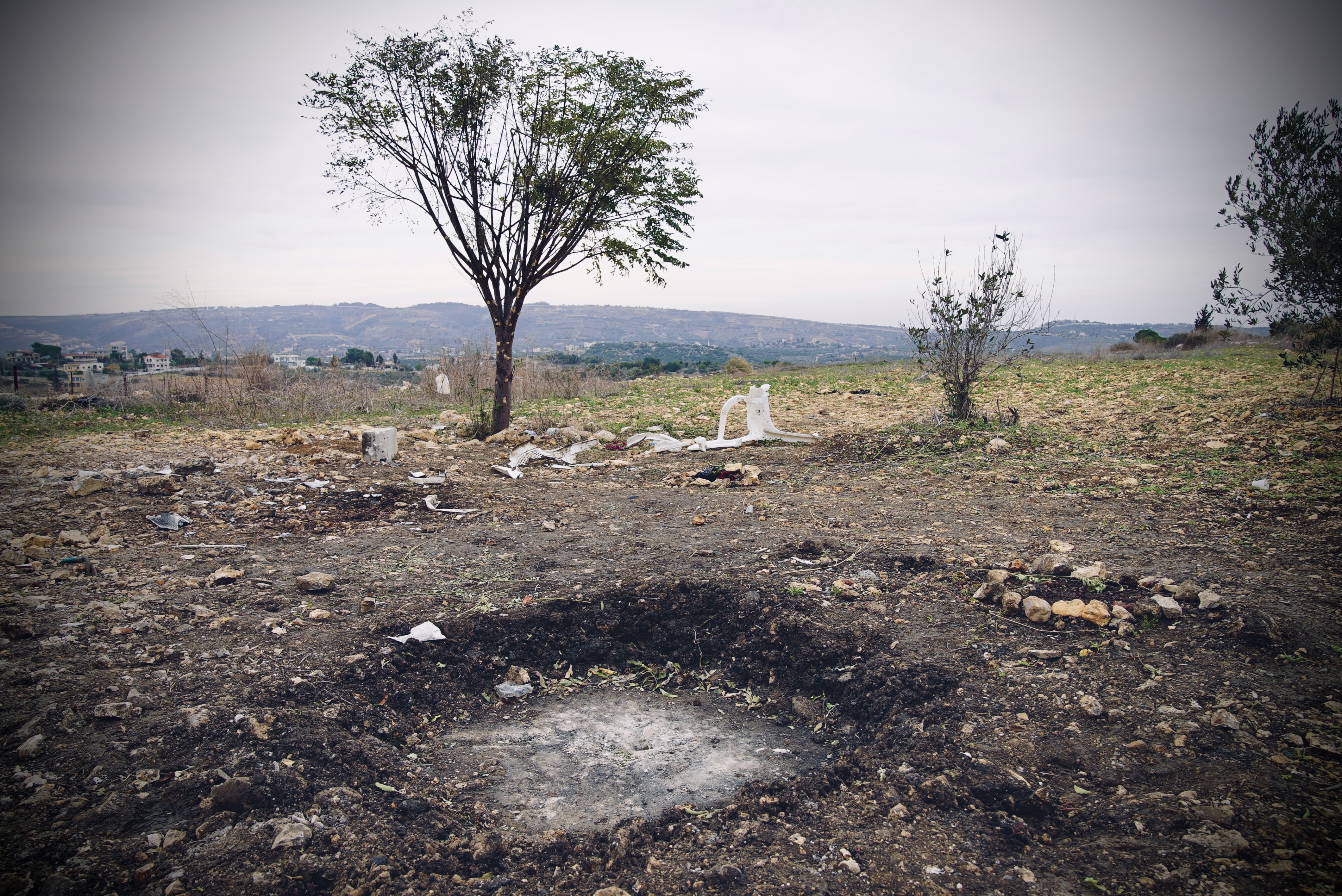 A large hole caused by Israeli strike in Tayr Harfa, southern Lebanon, Saturday Nov. 25. (Credit: Olivia Le Poidevin/L'Orient Today)
A large hole caused by Israeli strike in Tayr Harfa, southern Lebanon, Saturday Nov. 25. (Credit: Olivia Le Poidevin/L'Orient Today)
White plastic chairs were shredded into shards and a small bunch of red roses rested on top of the broken earth. A small trickle of people came to pay their respects. They returned to the area for the first time in weeks, having fled due to the intense dangers posed by daily bombardments from Israel, which is only 1.6 kilometers away. In the distance, one can see a large concrete wall, which separates Lebanon from its neighbor.
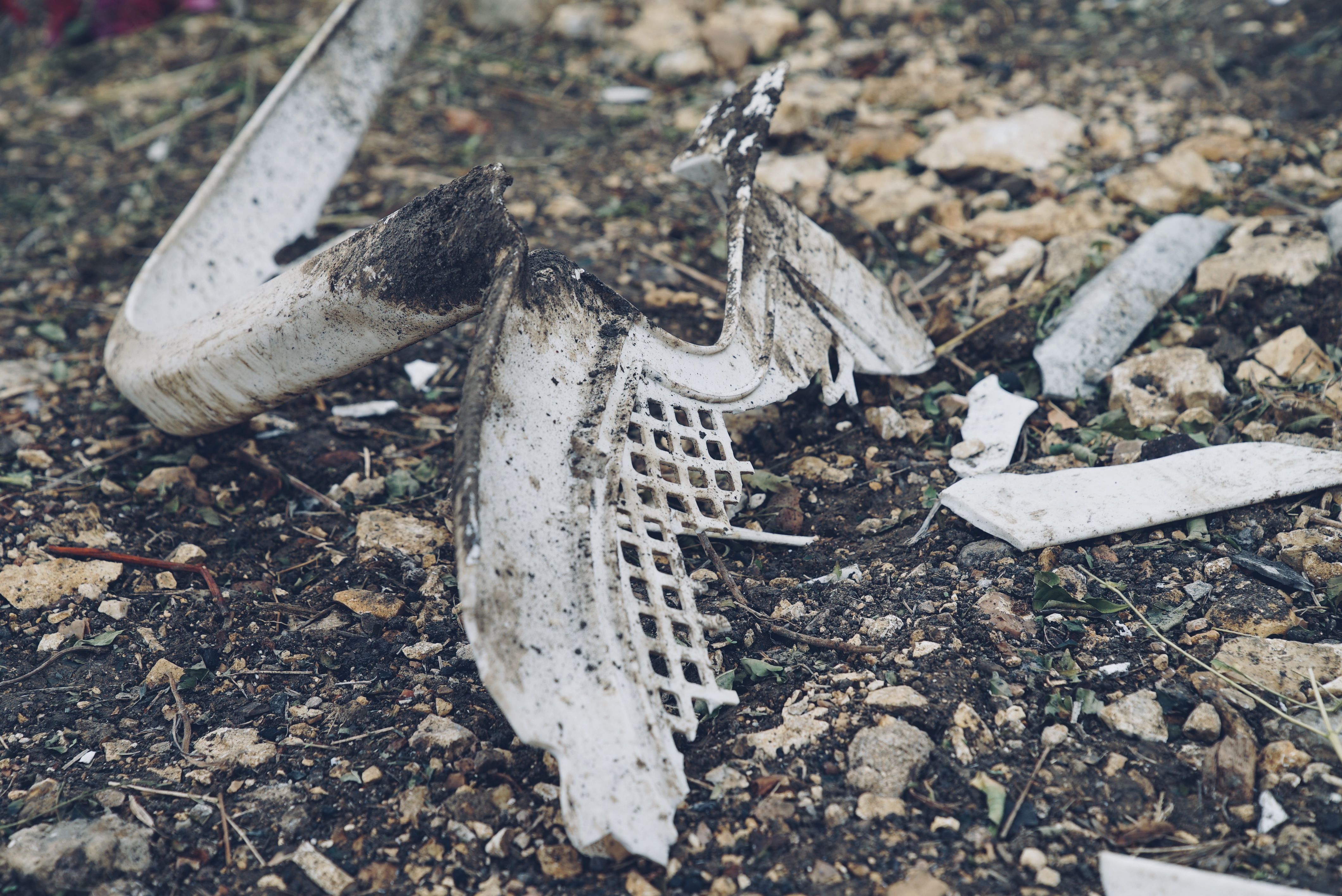 A plastic chair destroyed by Israeli strike in Tayr Harfa, southern Lebanon, Saturday Nov. 25. (Credit: Olivia Le Poidevin/L'Orient Today)
A plastic chair destroyed by Israeli strike in Tayr Harfa, southern Lebanon, Saturday Nov. 25. (Credit: Olivia Le Poidevin/L'Orient Today)
It is there that I met Abbas, a man in his seventies who pointed to his house, which is within eye shot to where this fatal Israeli missile struck. He fled this area in October after the first few days of fighting began.
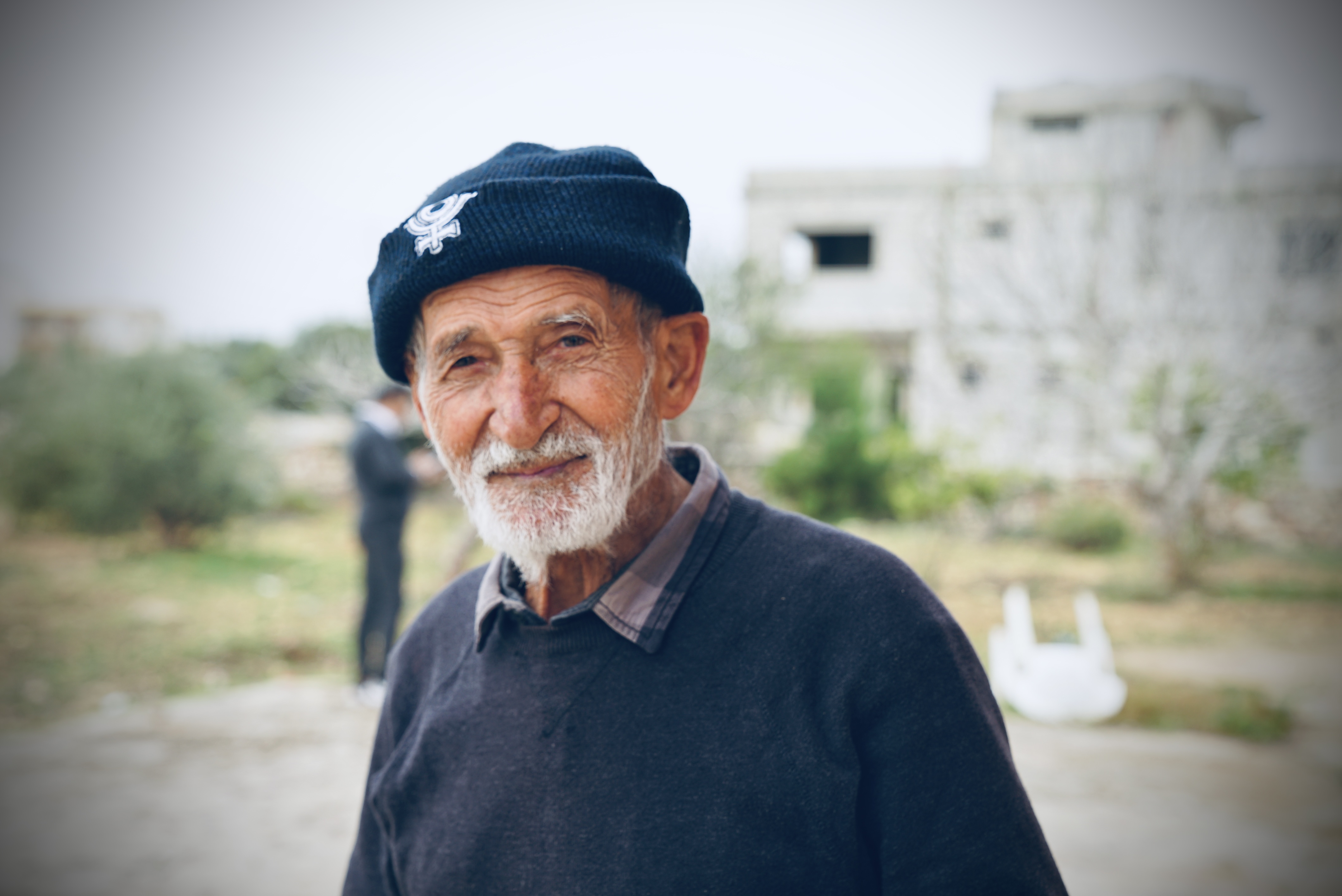 Abbas, inhabitant of the village of Tayr Harfa, southern Lebanon, Saturday Nov. 25. (Credit: Olivia Le Poidevin/L'Orient Today)
Abbas, inhabitant of the village of Tayr Harfa, southern Lebanon, Saturday Nov. 25. (Credit: Olivia Le Poidevin/L'Orient Today)
Today, he has come back to check on his home. Describing the situation as difficult, he said he is only comfortable returning to the area because of the ongoing four-day truce agreement between Israel and Hamas. On the opposite side of the street there is a house that has been badly damaged. But the village remained quiet, apart from the few who have returned.
Dhayra
As we drove to Dhayra, we saw house after house with little to no sign of life. The metal shutters of most shops were closed. For weeks, the majority of people there have left — making up some of the near 50,000 people across southern Lebanon who have been displaced, according to the UN. Not everyone managed to escape, though. At least 13 civilians have been killed in Lebanon, Reuters reported.
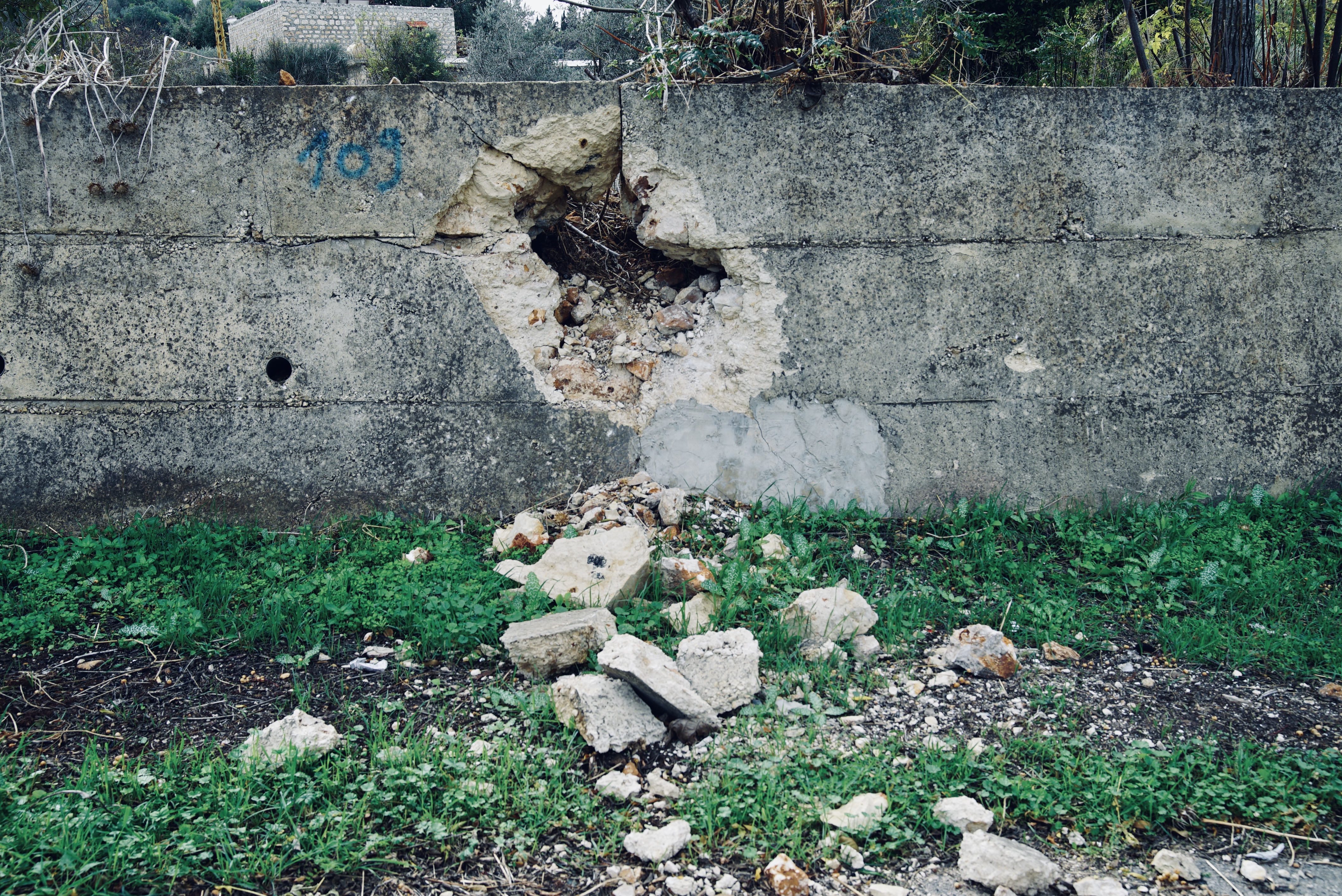 A wall damaged damaged by air strike, in the village Dhayra, southern Lebanon, Saturday Nov. 25. (Credit: Olivia Le Poidevin/L'Orient Today)
A wall damaged damaged by air strike, in the village Dhayra, southern Lebanon, Saturday Nov. 25. (Credit: Olivia Le Poidevin/L'Orient Today)
As we arrived in Dhayra, we saw multiple signs of damage from Israeli strikes. Olive trees were burnt, walls had large holes in them, and one road had a shallow hole where a shell had hit. Three members of the Lebanese army were in the middle of clearing the road when we arrived. They each claimed that the remains of a round metal shell we observed, in the grass beside the road, was a phosphorous bomb. L'Orient Today cannot yet independently verify this, though there have been multiple reports by L'Orient Le Jour, Amnesty International and Human Rights Watch which accused Israel of using white phosphorous in southern Lebanon. Recently, the Lebanese Environment Minister Nasser Yassin said Lebanon intends to file a complaint to the United Nations over the ensuing environmental damage, claiming incendiary strikes have burned 460 hectares of forests and orchards. The 1980 Geneva Convention, which Israel has not signed, prohibits the use of white phosphorous on civilians and in civilian areas due to its devastating effects on humans, animals and the environment.
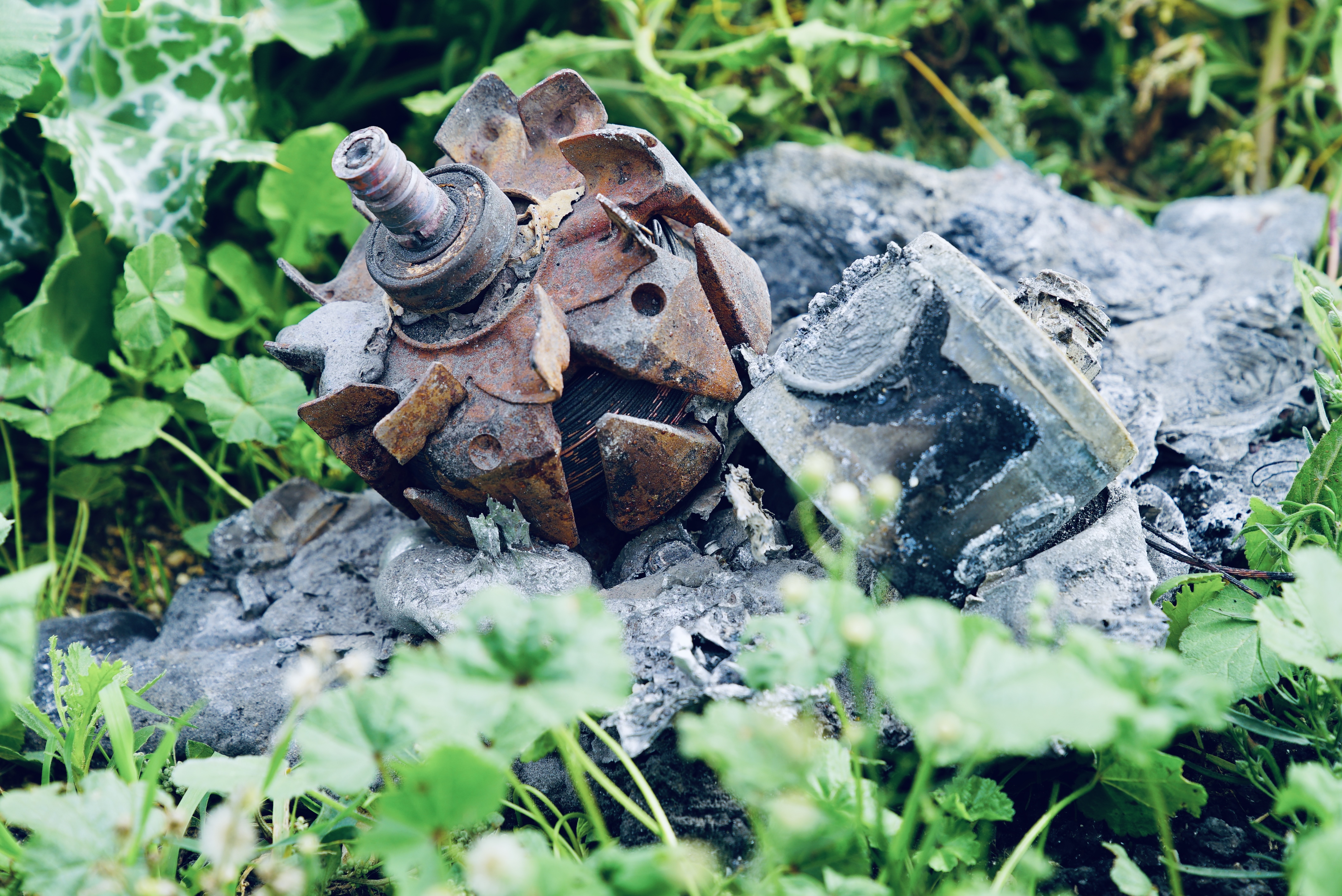 The remains of a shell laying in the grass in the village Dhayra, southern Lebanon, Saturday Nov. 25. (Credit: Olivia Le Poidevin/L'Orient Today)
The remains of a shell laying in the grass in the village Dhayra, southern Lebanon, Saturday Nov. 25. (Credit: Olivia Le Poidevin/L'Orient Today)
In Dhayra, my colleagues, Lyana Alameddine and Lucile Wassermann, and I visited the home of a family whose house was badly damaged from the explosion of an Israeli shell on Oct. 9.
“I had arrived home just 10 minutes before my car was struck by a shell. This house doesn't have fighters. This is a civilian car," said a 20-something male family member, who did not want to give his name due to security reasons. Outside lied the remains of the car, and black ash all over the ground and walls of the house.
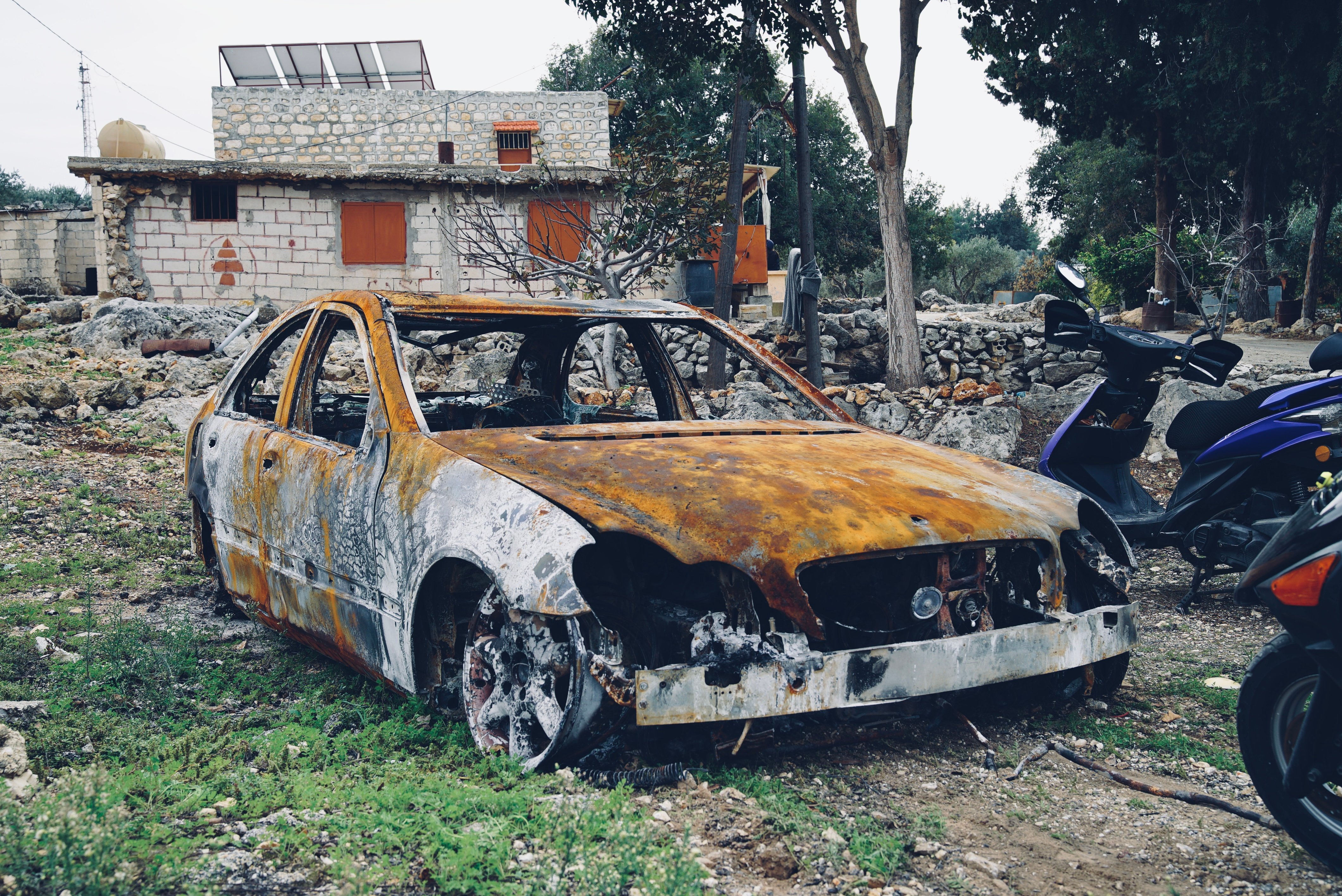 The remains of a car, which caught fire after Israeli air strike in the village of Dhayra, southern Lebanon, Saturday Nov. 25. (Credit: Olivia Le Poidevin/L'Orient Today)
The remains of a car, which caught fire after Israeli air strike in the village of Dhayra, southern Lebanon, Saturday Nov. 25. (Credit: Olivia Le Poidevin/L'Orient Today)
After the bombardment on Oct. 9, the family fled to safety immediately after the strike. On Saturday Nov. 25, they returned to their home for the first time to asses the damage, trying to take advantage of a four-day truce. His home has been partially damaged along with his solar panels.
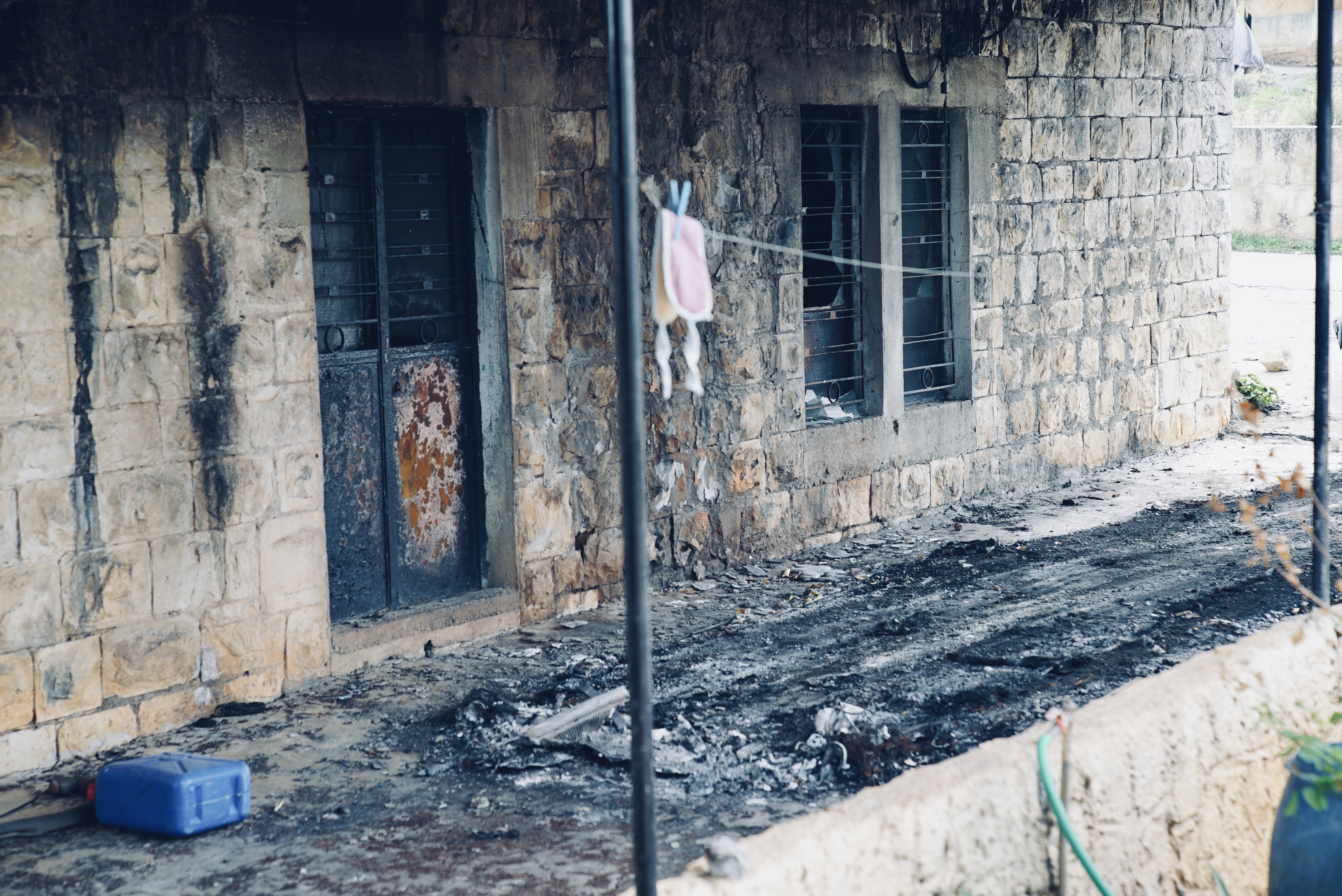 A house damaged by Israeli air strike in the village of Dhayra, southern Lebanon, Saturday Nov. 25. (Credit: Olivia Le Poidevin/L'Orient Today)
A house damaged by Israeli air strike in the village of Dhayra, southern Lebanon, Saturday Nov. 25. (Credit: Olivia Le Poidevin/L'Orient Today)
“When we came back to our village everything had changed. Some people in our village came back and found their homes inhabitable … We will leave again if there isn’t an extension of the ceasefire," he added. They are currently displaced, taking shelter in school in Sour.
This village is no stranger to conflict. “The situation in the village of Dhayra is enough to make a person cry. We are not happy with the way things are here. Every few years we are attacked. Before 2000, when we were kids, Dhayra was shelled every single day [by Israel]. In 2000 we were liberated, and for six years we lived peacefully, and then in 2006 we were attacked again. In 2006, some people fled in this village, some died, others lost their houses," the young man added.
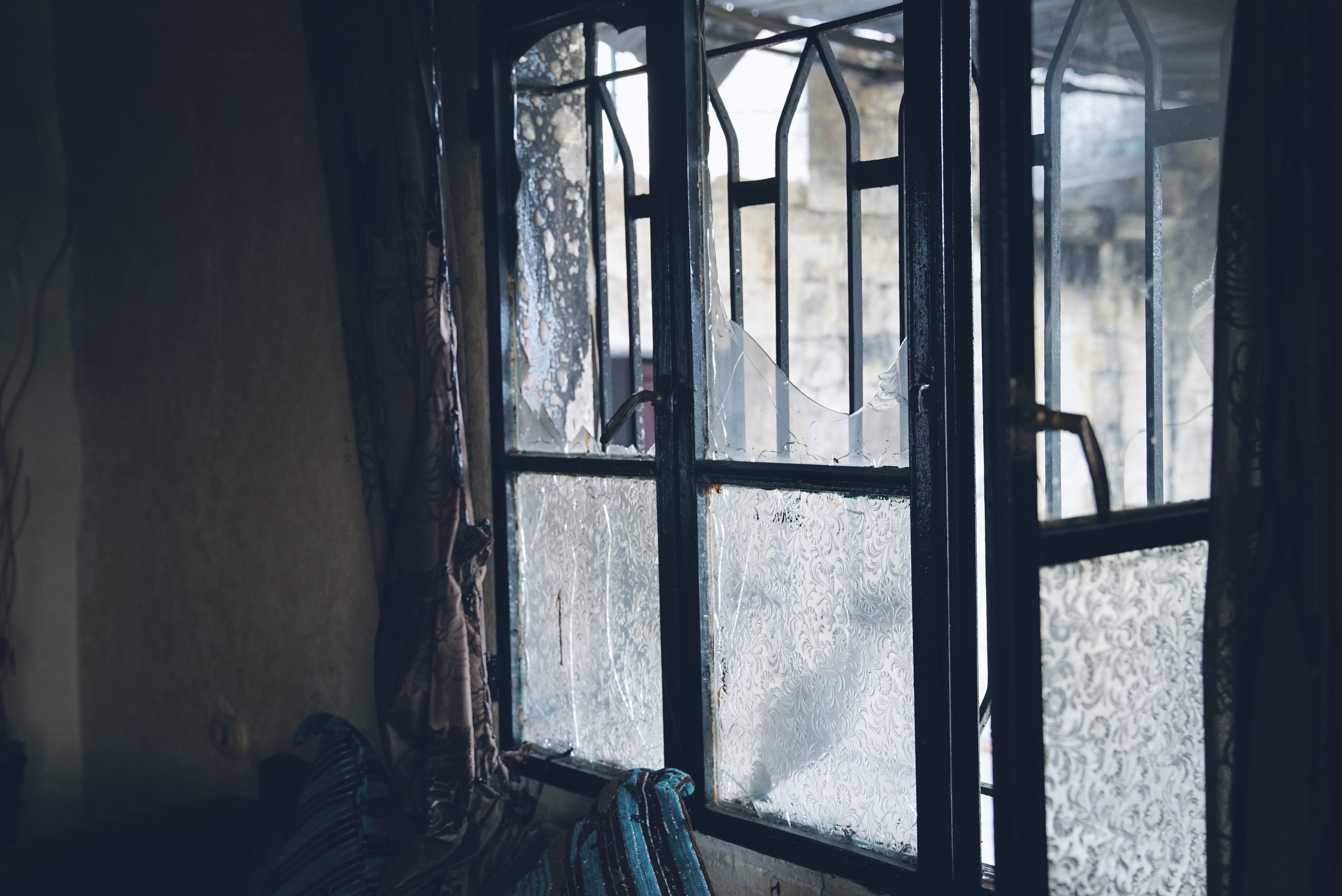 Broken glass windows of a house damaged by Israeli air strike in the village of Dhayra, southern Lebanon, Saturday Nov. 25. (Credit: Olivia Le Poidevin/L'Orient Today)
Broken glass windows of a house damaged by Israeli air strike in the village of Dhayra, southern Lebanon, Saturday Nov. 25. (Credit: Olivia Le Poidevin/L'Orient Today)
"It’s hard to see your hometown, where you were born and raised, being attacked this way," he concluded.
As we continued to walk, we saw further remains of Israeli shells — strewn across an olive grove. Its metal had been bent and manipulated.
As the clock neared one o'clock, the tentative peace that had held for the past 24 hours of the truce was cut, suddenly, by the sound of sirens blaring. The sirens were followed swiftly by a large boom, and what sounded like an explosion.
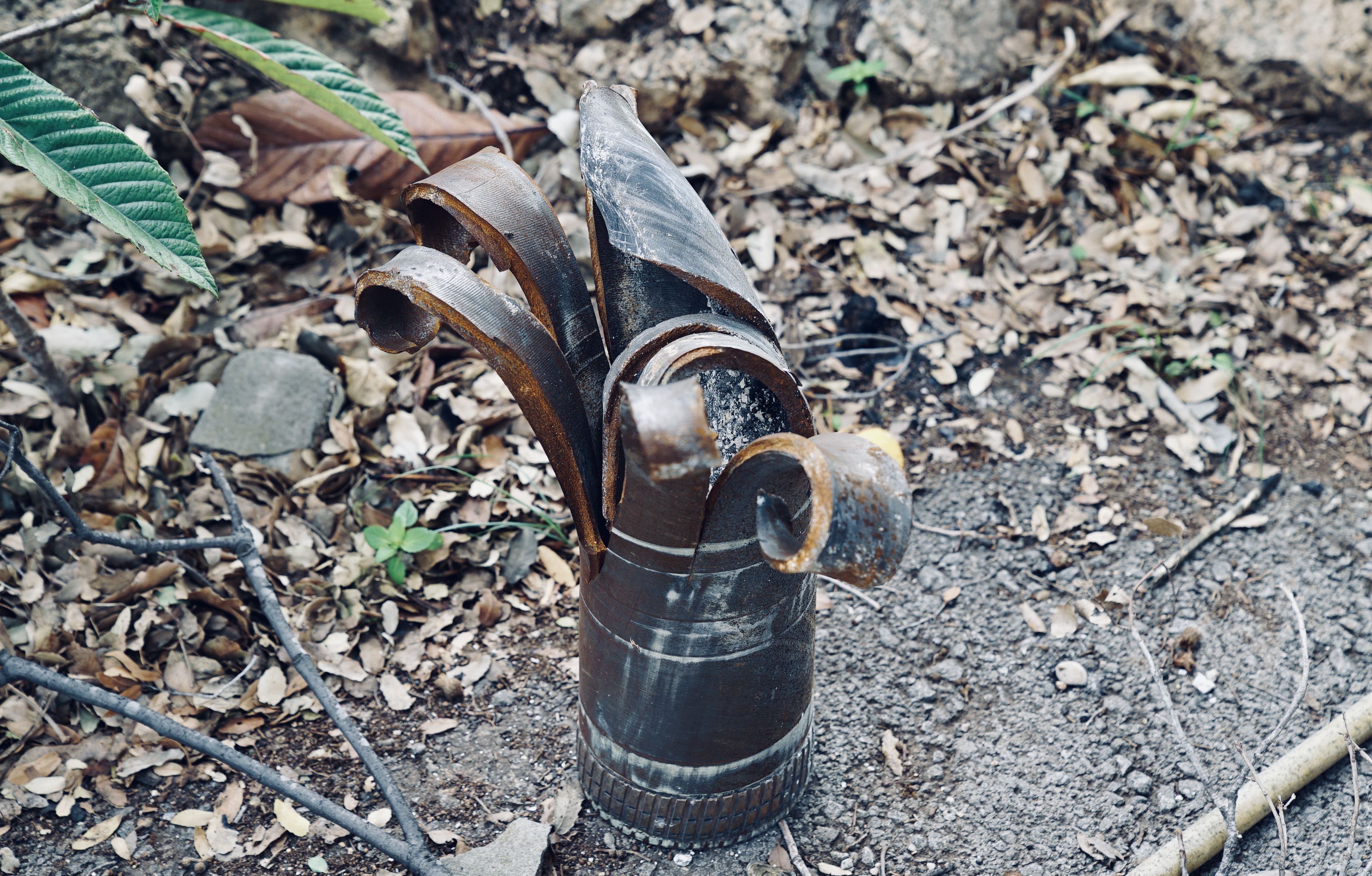 Remains of a shell lying in an olive grove in the village of Dhayra, southern Lebanon, Saturday Nov. 25. (Credit: Olivia Le Poidevin/L'Orient Today)
Remains of a shell lying in an olive grove in the village of Dhayra, southern Lebanon, Saturday Nov. 25. (Credit: Olivia Le Poidevin/L'Orient Today)
Suddenly we and those in the village rushed to our cars and motorcycles, and we made our way hastily on the road heading back to Sour. An Israeli army spokesman, quoted by Israeli newspaper Haaretz, said that a "suspicious target" from Lebanon entered Israeli territory and it was intercepted by the Israeli army. Hezbollah told L'Orient Today that it had not fired any missiles against Israel.
Today, a reminder for those from these villages that this war is far from over, and few know when they can return home for good.